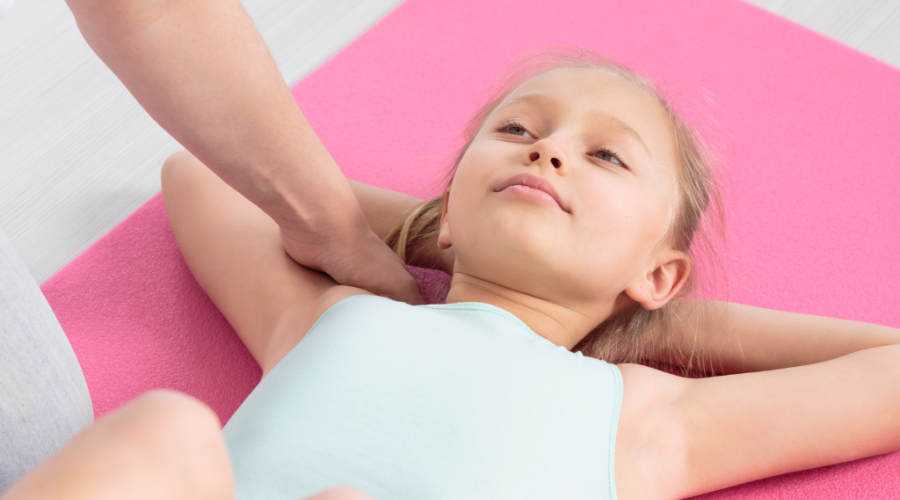
Take Five: Paediatric Physiotherapy

Welcome to our first Take Five Q&A! Caron Nodwell, Social Mums Club - Bulimba Cannon Hills & Surrounds Franchise Owner teamed up with Marianna Arteaga, Right at Home Allied Health Bulimba Hawthorne Senior Clinic Manager and Physiotherapist to discuss paediatric physiotherapy.
1. What are some signs parents should look out for to determine whether their child might benefit from physiotherapy?
The main thing parents should look out for is whether their child is reaching their developmental milestones. If your child is at an age where they should be sitting or should be standing and they’re not quite there yet, that’s a good sign for you to go and see a paediatric physio and get them assessed.
If your child is having postural issues, if they’re grimacing or showing pain behaviours when moving it is probably wise to get them assessed by a paediatric physiotherapist.
2. How does paediatric physiotherapy differ from adult physiotherapy in terms of treatment approach and techniques?
The biggest difference with paediatric physiotherapy is that we take a play-based approach to treatment that focuses on the areas we need to treat.
3. What kinds of childhood conditions or developmental delays do you most commonly treat at your Bulimba Hawthorne clinic?
We see a wide variety of paediatric physiotherapy enquiries. We see sports injuries like ankle and knee strains. We also see kids that might have neck issues or headaches due to spending too much time on their devices and not having good posture whilst they’re using them. We also help kids with genetic disorders like down syndrome and hiperlaxitude (hypermobility) disorder where their ligaments are really lax and they’re more prone to injury. The good thing about physiotherapy is that we can help lots of different kinds of patients.
4. How can physiotherapy help with specific challenges like tiptoe walking, poor coordination, or balance difficulties in children?
Paediatric physiotherapy can help with tip toe walking by thoroughly assessing the underlying causes. Sometimes it’s due to reduced range of movement in the ankles, tight calves, or having a neurological condition that might make them more prone to walking on their tippy toes. For poor coordination, most of the time it has to do with motor development. Sometimes it can be linked to neurological disorders – a lack of neurological integration of some reflexes.
It’s about finding the source of the problem and trying to figure out a way to help the child go through these hurdles and achieve those milestones. We teach them exercises like walking on their heels and come up with games to get them to engage the proper muscles, so their walking improves. For poor balance, it’s about challenging their balance so you can make the nervous system engage properly and get the vestibular system and all the joints and muscles engaging properly.
5. How do you work with families to support a child’s development through physiotherapy?
It’s important for us to work as a team because we only see the child for a short period of time and the parents are with the child day in and day out. We always try to educate the family so they can provide different tools and strategies to help the child reach their goals.
For more insights on paediatric physiotherapy, visit our blog!
Right at Home Allied Health is dedicated to delivering quality, patient-centred care across Australia. Our allied health services comprise chiropractic, exercise physiology, occupational therapy, optometry, osteopathy, physiotherapy, podiatry, psychology, and speech pathology. We also provide remedial massage therapy, clinical nutrition, clinical naturopathy, and clinical Pilates. Our mission is to improve the quality of life for those we serve by decoding health, happiness, and harmony. Discover, heal, and optimise your physical and emotional wellbeing with Right at Home Allied Health. Book a Discovery Session at your local clinic today.
*Some services may not be available in all locations. Please contact your local office to learn more about their in-clinic and at-home allied health and wellbeing services.